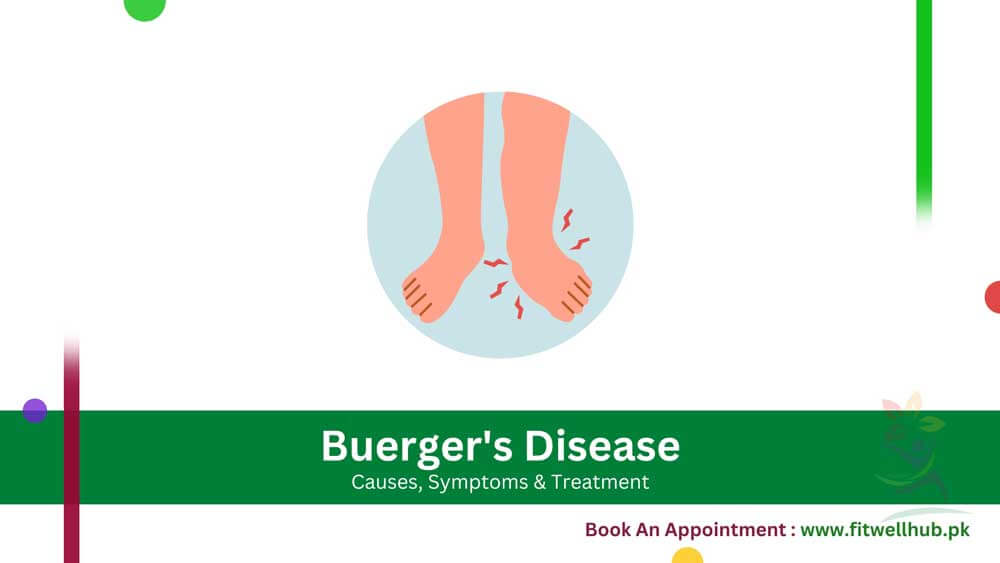Amyloidosis disease occurs rarely but is a serious condition developed due to abnormal build-up of amyloid proteins in organs and tissues. Normal functions of major organs including kidneys, heart, nervous system, and liver are disturbed due to these misfolded proteins, causing life-threatening complications if not treated early.
Quick Links
ToggleThere are different types of amyloidosis such as AA (secondary), AL (primary), and hereditary amyloidosis, with distinct risk factors and causes. Some kinds of amyloidosis are associated with basic health conditions such as multiple myeloma or severe inflammatory diseases. Early diagnosis is important because symptoms can be mild and easily confused with other conditions.
The main focus of treatment is to manage symptoms, slow the disease progression, and address the primary conditions causing amyloid production. With proper care, people having amyloidosis can decrease the effects of the disease and improve their quality of life.
Symptoms
Amyloidosis can be detected through several symptoms based on tissues and organs impacted by amyloid deposits. Initial symptoms may be subtle and frequently coexist with other diseases, causing difficulties in diagnosis. Early recognition of these symptoms is crucial for prompt intervention and treatment. Some of the common symptoms are given below:
1- Fatigue
Fatigue is often the most common and tolerable symptom of amyloidosis, arising as the body struggles to function normally because of the presence of amyloid deposits in vital organs. This constant tiredness causes frustration in carrying out daily tasks and leads to a decline in overall health.
2- Swelling in Legs and Ankles
Swelling in the ankles and legs, also named edema, is caused by the effect of amyloid deposits on the heart or kidney, resulting in fluid retention. The symptom if ignored can be very uncomfortable and restrict the range of movement.
3- Shortness of Breath
This symptom can occur with the accumulation of amyloid deposits in the heart, causing restrictive cardiomyopathy. In this condition, the heart fails to contract effectively to pump blood and as a result, patients suffer from respiratory distress while doing physical activity or even at rest.
4- Numbness or Tingling in Hands and Feet
One of the common symptoms is tingling or Numbness in the extremities (arms and legs), also known as peripheral neuropathy. This symptom occurs due to nerve damage by amyloid deposits, leading to pins-and-needles sensation or tingling or a loss of sensation, especially in the feet and hands.
5- Unexplained Weight Loss
Unexplained weight loss may be the symptom of amyloidosis, particularly if the digestive system is impacted due to the accumulation of amyloid in the gastrointestinal tract. These deposits disrupt nutrient absorption, leading to malnutrition and unintended weight loss.
When to See a Doctor
When you observe certain symptoms like swelling in ankles or legs, numbness, consistent fatigue, tingling in feet or hands, or shortness of breath, it is crucial to consult a healthcare provider. These symptoms could also be manifestations of amyloidosis or other serious illnesses that must be addressed medically.
Early detection and treatment are essential in managing this condition and preventing the development of complications. Moreover, if there is a history of amyloidosis or a similar disorder in the immediate family, regular monitoring and check-ups are important to identify any initial symptoms of the disease.
FitwellHub is competent in health issues and has specialized doctors capable of managing diseases. Our doctors will assess your health status, suggest relevant tests as well as provide the appropriate treatment. If you want to know more about us and book an appointment, visit the FitwellHub Doctors.
Causes
Amyloidosis is the result of deposits of abnormal proteins called amyloids in tissues and organs, interfering with their normal functioning. The location and type of these amyloid deposits depend on the underlying chronic condition causing the protein buildup.
1- Genetic Mutations
Mutations in various genes that result in abnormal production of amyloid proteins are responsible for hereditary forms of amyloidosis. For example, mutations in the TTR gene lead to hereditary transthyretin amyloidosis where misfolding of transthyretin protein results in accumulation primarily in the heart and nerves.
2- Chronic Infections
Chronic infections, like osteomyelitis or tuberculosis, can lead to an abnormal protein production named serum amyloid A. With time these proteins may accumulate and create amyloid deposits in key organs, developing a type of amyloidosis known as AA (or secondary) amyloidosis.
3- Chronic Inflammatory Diseases
Chronic inflammation due to conditions such as inflammatory bowel and rheumatoid arthritis disease, results in increased serum amyloid A protein levels. The protein may be deposited in organs and tissues to develop AA amyloidosis, which affects the spleen, liver, and kidney.
4- Multiple Myeloma
The more common type of amyloidosis is AL-amyloid, associated with multiple myeloma. In this case, abnormal plasma cells overproduce light chain proteins in the bone marrow, which form and misfold amyloid deposits in several organs such as nerves, kidneys, and heart.
5- Kidney Dialysis
Patients receiving long-term kidney dialysis are at risk for the development of amyloidosis related to dialysis. This process can result in the accumulation of a protein called beta-2 microglobulin, which may build up in joints and bones leading to pain, restricted mobility, and stiffness.
Risk Factors
Amyloidosis results from several risk factors that raise the chances of disease development. Recognizing these risk factors will help in early diagnosis and intervention. A few of the risk factors are given below:
- Age: Amyloidosis primarily affects older adults, especially those over 60, as aging increases the risk of abnormal protein production and deposition, making age a key risk factor.
- Family History: The risk of amyloidosis is greatly increased by family history of it, especially in hereditary types of the illness. Generational genetic mutations make people susceptible to the buildup of amyloid protein, causing the disease to occur earlier in life.
- Gender: Males are more prone to amyloidosis development than females. The exact reason for this gender difference is still unknown, but it can be associated with hormonal and genetic factors that affect the product and deposition of amyloid protein.
- Ethnicity: Definite types of amyloidosis like inherited ATTR amyloidosis, are more prevalent in some race groups like African Americans. Genetic mutations within particular populations can make a person more susceptible to the illness.
Complications
Amyloidosis may lead to several different complications, impacting systems and organs throughout the body. The following are potential complications:
- Heart Failure
- Kidney Damage
- Peripheral Neuropathy (Nerve Damage)
- Gastrointestinal Issues
- Liver Enlargement
- Bleeding Disorders
Amyloidosis complications are related to the type of organs affected by Amyolid deposits. In the heart, amyloidosis may cause restrictive cardiomyopathy where it is hard for the heart to pump the blood, leading to heart failure effectively. Usually, kidney damage is one of the common complications, in which amyloid deposits cause leakage of proteins in urine, ultimately resulting in last-stage kidney failure.
It may also cause nerve damage (peripheral neuropathy), giving rise to symptoms including numbness, pain, and tingling in the feet or hands. This can cause digestive problems such as constipation, diarrhea, or malabsorption of nutrients that also indicate gastrointestinal symptoms.
Amyloidosis can affect the liver, leading to a condition called hepatomegaly, which increases the liver’s size and diminishes its functionality. Moreover, amyloidosis primarily affects blood vessels and worsens the body’s ability to clot blood, leading to bleeding disorders.
Prevention
Amyloidosis prevention includes managing the root causes and making lifestyle changes to decrease the risk of developing this condition. Effective preventive methods include:
1- Managing Chronic Conditions
Prevention of secondary amyloidosis can save from long-term damage by keeping chronic diseases such as rheumatoid arthritis or multiple myeloma in control. Regular follow-up with medical care and following prescribed treatment are important.
2- Healthy Diet and Exercise
Following a healthy diet and being active in physical activities can contribute to general health, lowering the likelihood of diseases that could result in amyloidosis.
3- Regular Kidney Monitoring
For individuals going through chronic dialysis, regular tracking of kidney function and adopting other techniques like kidney transplants, can assist in preventing amyloidosis related to dialysis.
4- Genetic Counseling
For families in which amyloidosis is hereditary, genetic counseling can be important to determine the chances of hereditary types of disease and provide information about preventive measures.
5- Avoiding Risk Factors
You can lower the risk of developing amyloidosis by reducing exposure to chronic inflammation and decreasing alcohol intake.
6- Routine Health Check-ups
Regular health check-ups help in detecting early symptoms of amyloidosis or associated disorders, leading to early diagnosis and management.
The FitwellHub provides a Healthy Elite Lifestyle Program to prevent diseases and for healthy living. To learn more about how to maintain health and prevent conditions such as amyloidosis.
Diagnosis
Diagnose amyloidosis through a comprehensive review of the medical history, a physical exam, and numerous tests aimed at identifying amyloid deposits in various organs. The diagnosis may involve:
1- Tissue Biopsy
Amyloid deposits are usually found by tissue biopsy. In this process, healthcare providers take a small sample of tissue from the organs affected by amyloid deposits, such as the skin, liver, or kidney, and examine it under a microscope for amyloid proteins.
2- Blood Tests
Blood tests determine abnormal protein levels and other markers in the blood that may indicate the existence of amyloidosis.
3- Urine Tests
These tests often show elevated levels of protein indicating the involvement of kidneys in amyloidosis development. This test helps in examining the severity of organ damage.
4- Electrocardiogram (ECG)
An ECG assesses the heart’s electrical activity and can assist in identifying the heart issues associated with amyloidosis like arrhythmias or declined heart function.
5- Imaging Tests
Imaging tests like, MRI, CT scans, or echocardiograms can be used to detect organ malfunction or enlargement due to amyloid deposits.
FitwellHub has state-of-the-art labs that provide advanced diagnosing services such as biopsies and blood tests for diseases such as amyloidosis. To explore our diagnostic services, visit FitwellHub Lab.
Treatment
Treatment of amyloidosis aims to manage symptoms, slow the progression of the disease, and address the primary cause. Common treatments involve:
1- Chemotherapy
Amyloidosis related to plasma cell disorders, such as multiple myeloma, can be treated with chemotherapy. This process involves a decrease in abnormal protein production that can lead to amyloid deposits.
2- Targeted Therapy
Monoclonal antibodies are targeted therapies designed to remove amyloid deposits or the cells that cause the overproduction of abnormal proteins. These therapies are used to reduce the amyloidosis production and enhance the organ function.
3- Organ Transplants
Organ transplants can be considered a treatment option for amyloidosis especially in most severe cases in which irreversible damage to organs is caused by amyloid. Heart, liver, and kidney transplants can increase the survival rate and improve life quality for some people who have advanced amyloidosis.
Medications
The main focus of medications for amyloidosis is to alleviate symptoms, minimize amyloid buildup, and treat the primary causes of disease. The following drugs are prescribed depending on the type and severity of amyloidosis:
1- Proteasome Inhibitors
Proteasome inhibitors including Carfilzomib and Bortezomib are usually used as medications for treating amyloidosis related to plasma cell disorders and multiple myeloma.
These medicines block the proteasome (a cellular component), responsible for regulating the degrading of proteins, resulting in decreased abnormal protein production.
2- Immunomodulatory Drugs
Immunomodulatory drugs such as Pomalidomide and Lenalidomide are used in the treatment of amyloidosis particularly related to multiple myeloma. These medications assist in improving the immune response and decrease the synthesis of amyloid-forming proteins.
3- Chemotherapy Drugs
Chemotherapy drugs like Melphalan are useful in treatment in which amyloidosis is related to multiple myeloma. These drugs focus on killing rapidly dividing cells, such as those that produce abnormal proteins, leading to a reduction in amyloid deposits and a gradual decrease in disease progression.
4- Targeted Therapies
A medicine called Daratumumab is used in targeted therapies which kills and clears the cells that generate amyloid-forming proteins. These approaches might have the potential for disease control and improve organ function.
FitwellHub’s pharmacy can help you manage your amyloidosis effectively with a variety of medications. To get help in your amyloidosis management, visit the FitwellHub Pharmacy, as it provides advanced services that give you a reliable way to have these medications.
Frequently Asked Questions (FAQ’s)
Amyloidosis usually occurs due to an abnormal accumulation of amyloid proteins in tissues and organs leading to disruption in their normal functionality.
Symptoms of amyloidosis can include swelling in the ankles and legs, frequent tingling or numbness in feet or hands, an enlarged tongue that may appear to have teeth marks along its edges, irregular heartbeat, unexplained weight loss, fatigue, and shortness of breath.
It doesn’t cause cancer, but it can link to certain types, including multiple myeloma.
The life expectancy of people having amyloidosis disease is based on its severity level and type, as timely and accurate diagnosis and treatment can improve survival rate and maintain the quality of life.
Suspect amyloidosis in patients with persistent fatigue, unexplained weight loss, numbness, tingling, or swelling, particularly with a family history of the disease.











